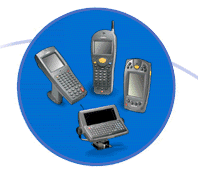


|
In the past decade, mobile computing and communications devices have become essential productivity tools. The popularity of these devices has risen as their cost and sizes have diminished. The advantages of wireless can be summarized as follows.
Mobility. Wireless LAN systems can provide LAN users with access to real-time information anywhere in their organization. This mobility supports productivity and service opportunities not possible with wired networks. Installation Speed and Simplicity. Installing a wireless LAN system can be fast and easy and can eliminate the need to pull cable through walls and ceilings. Installation Flexibility: Wireless technology allows the network to go where wire cannot go. Reduced Cost-of-Ownership. While the initial investment required for mobile computing hardware can be higher than the cost of wired hardware, overall installation expenses and life-cycle costs can be significantly lower. Long-term cost benefits are greatest in dynamic environments requiring frequent moves and changes. Scalability. Wireless systems can be configured in a variety of topologies to meet the needs of specific applications and installations. Configurations are easily changed and range from peer-to-peer networks suitable for a small number of users to full infrastructure networks of thousands of users that enable roaming over a broad area. |
|
